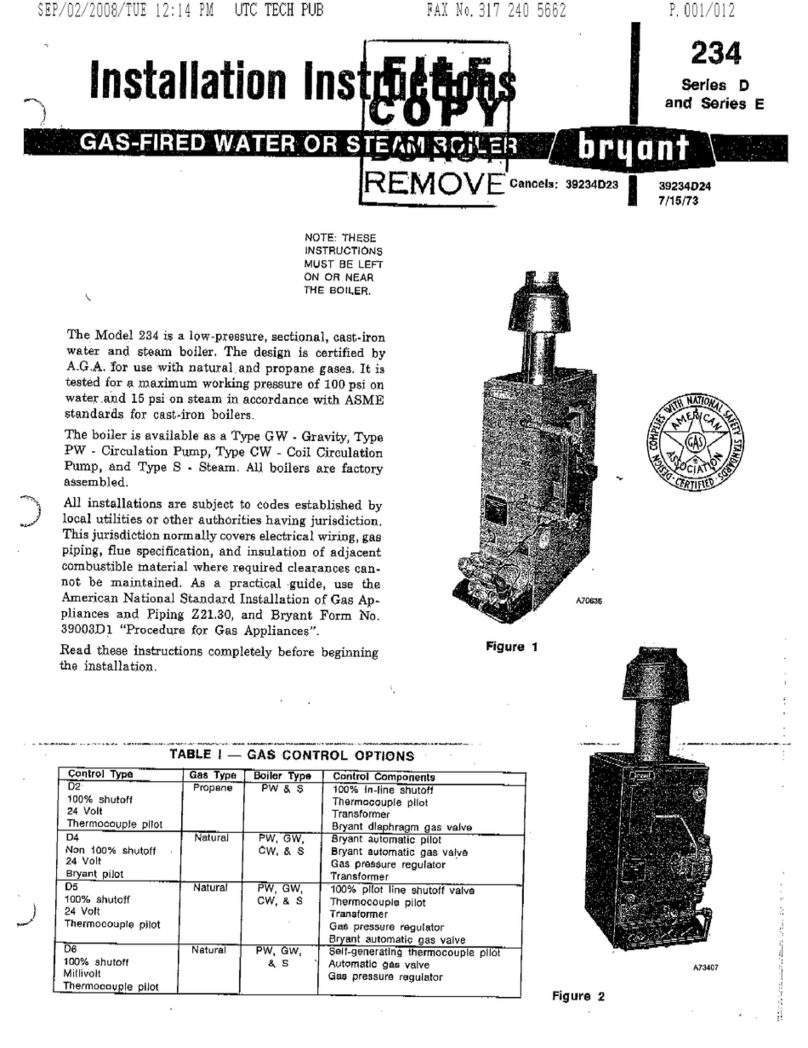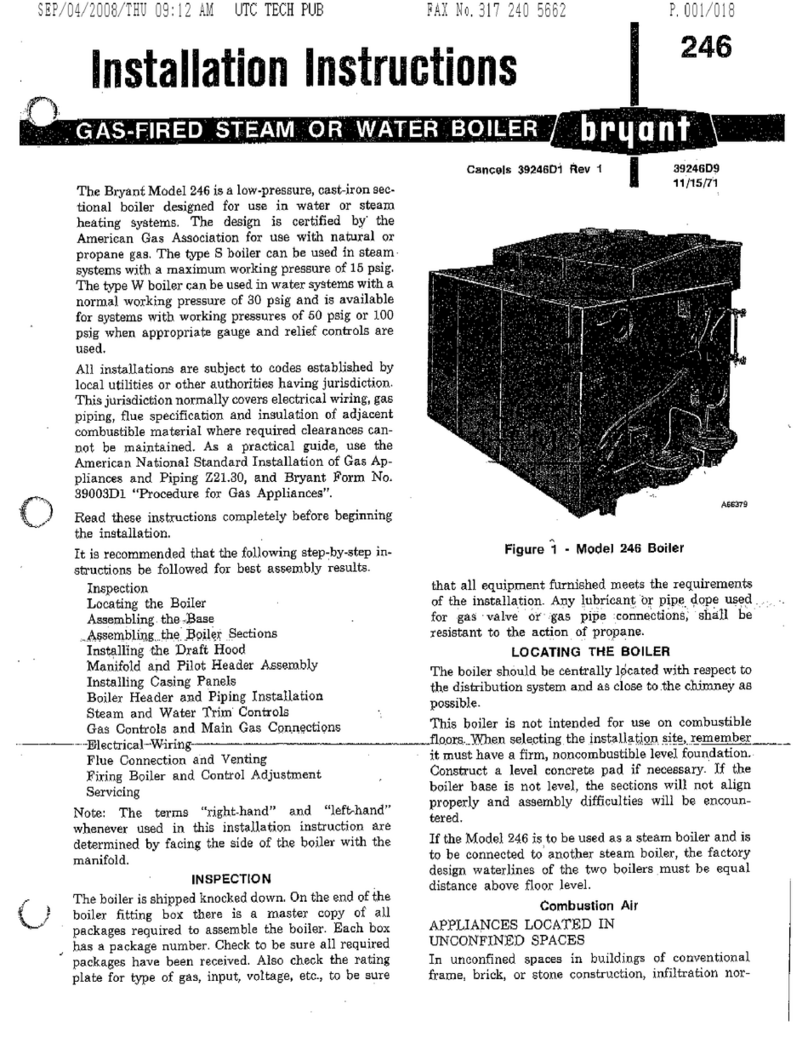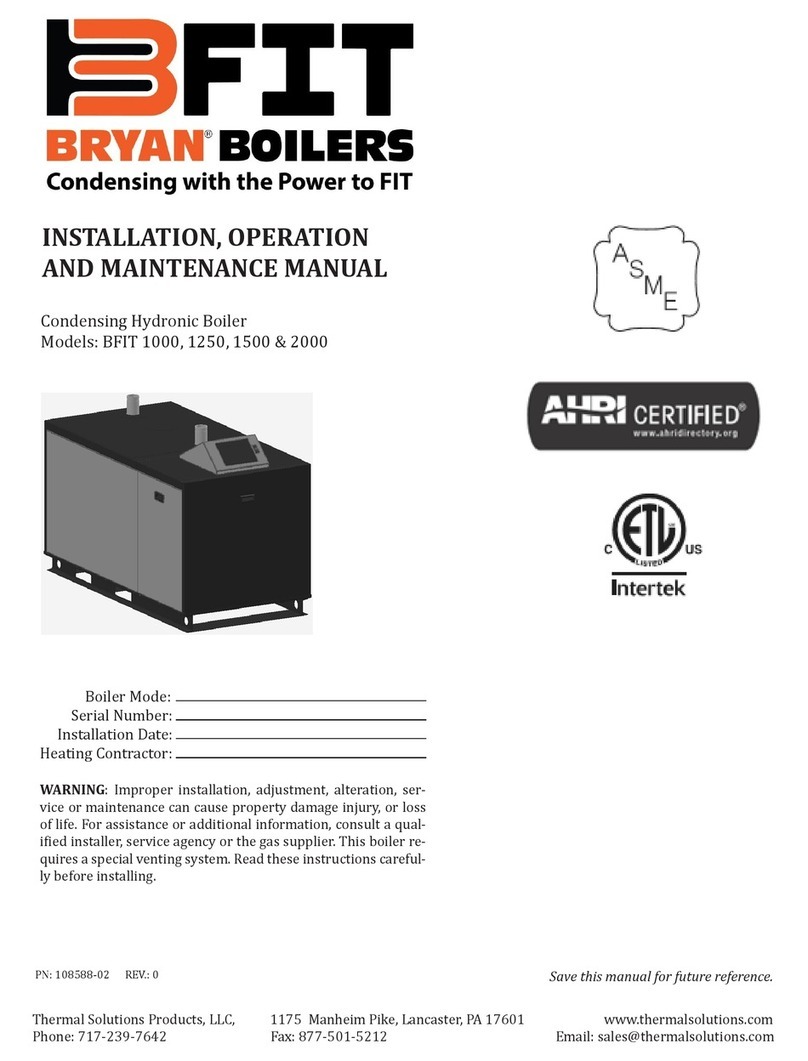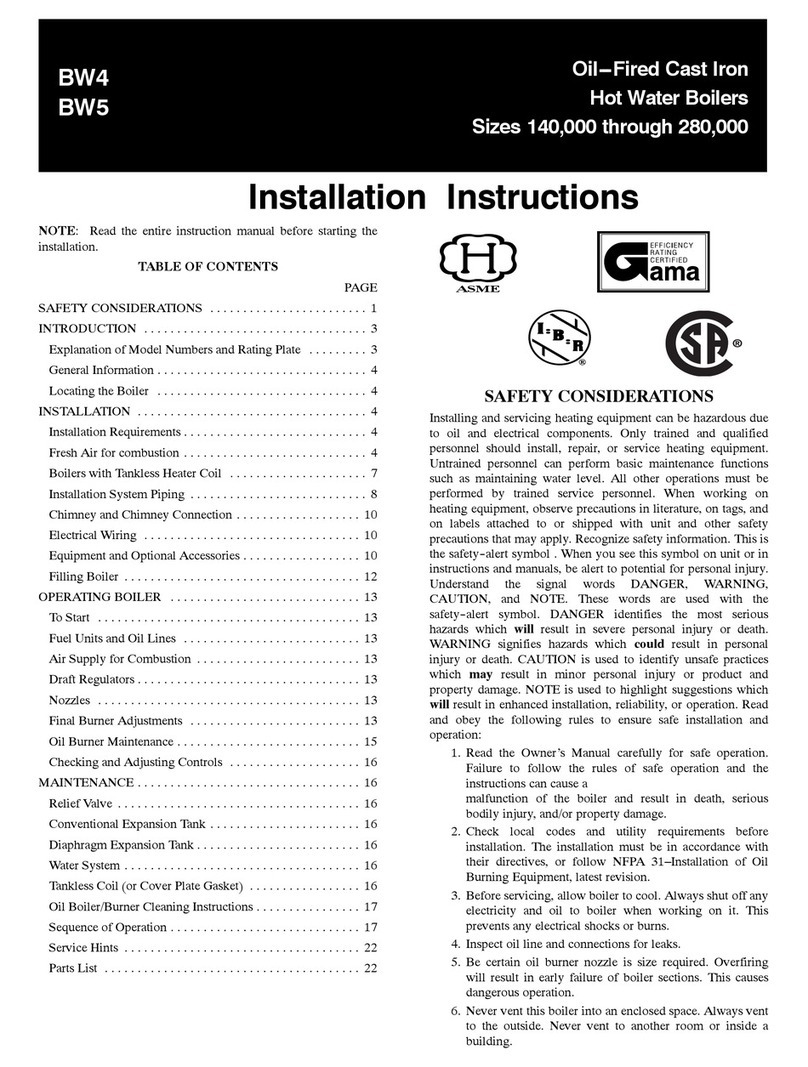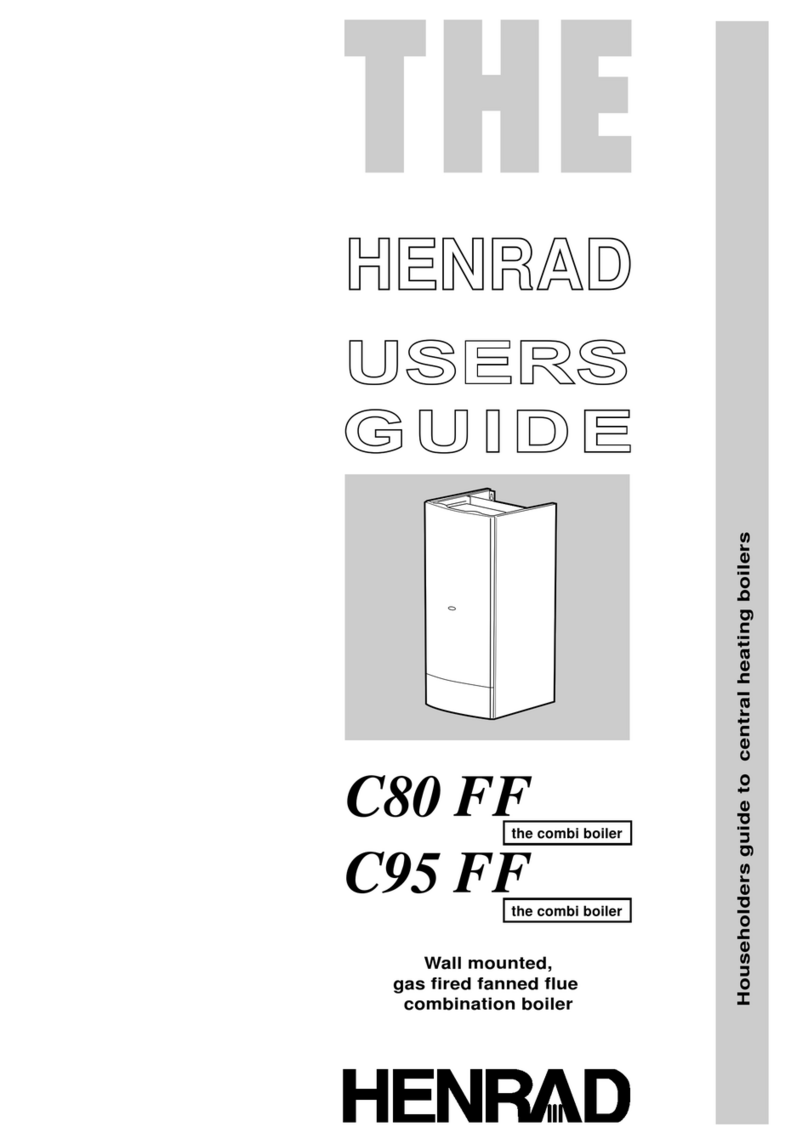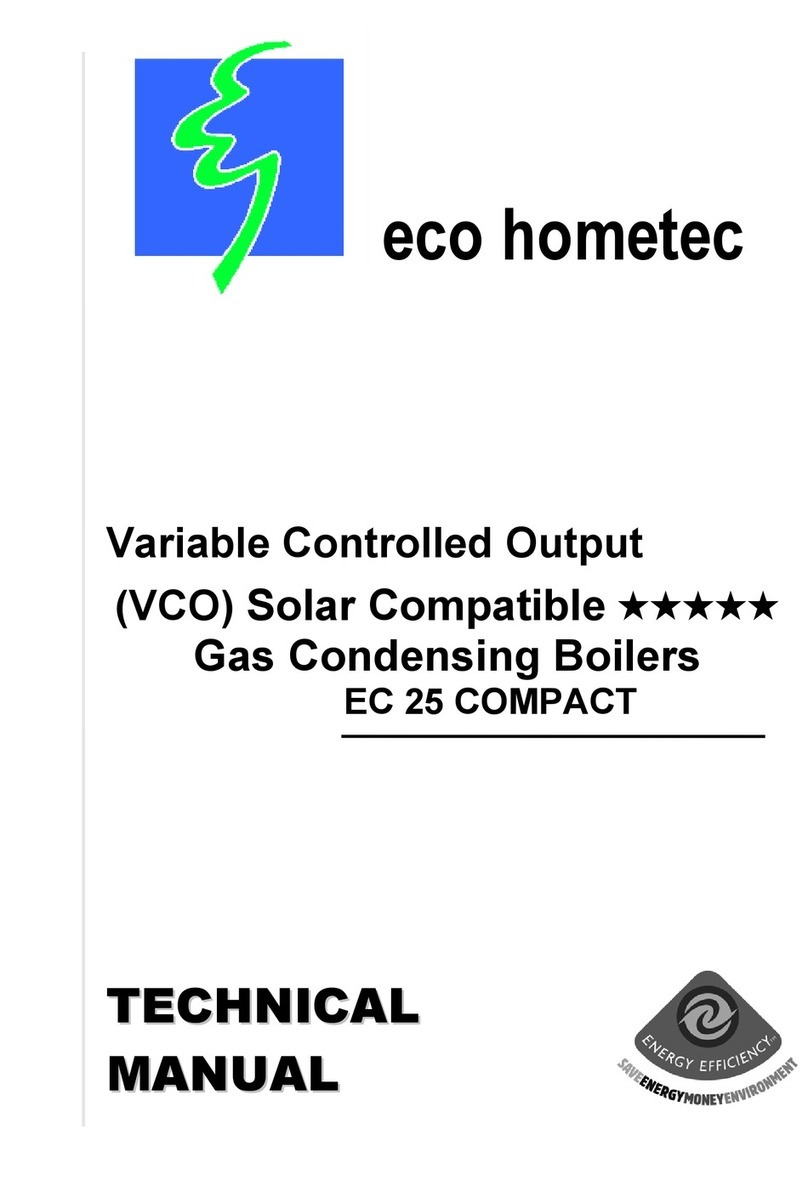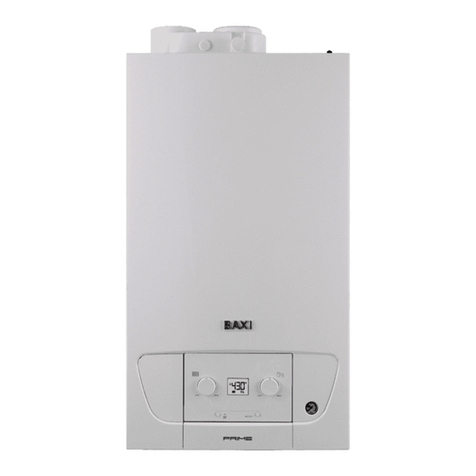Bryant 246 User manual
Other Bryant Boiler manuals
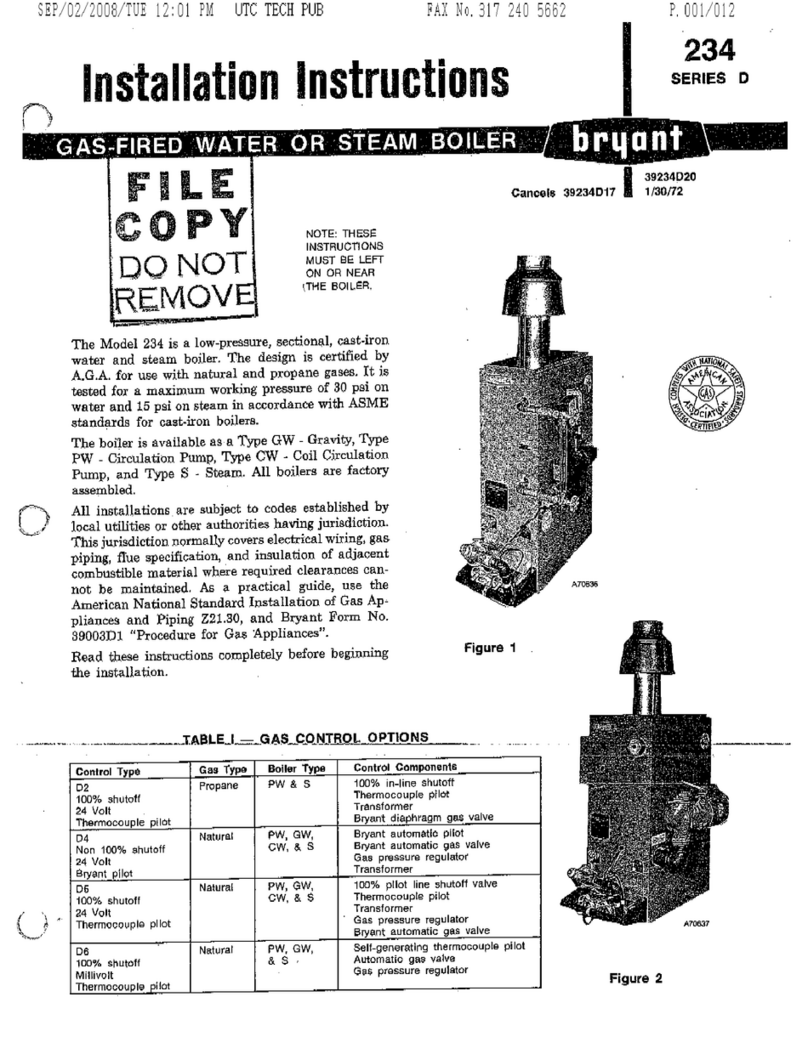
Bryant
Bryant 234 User manual

Bryant
Bryant BS1 Operator's manual

Bryant
Bryant BWBBAN000045 Instruction manual
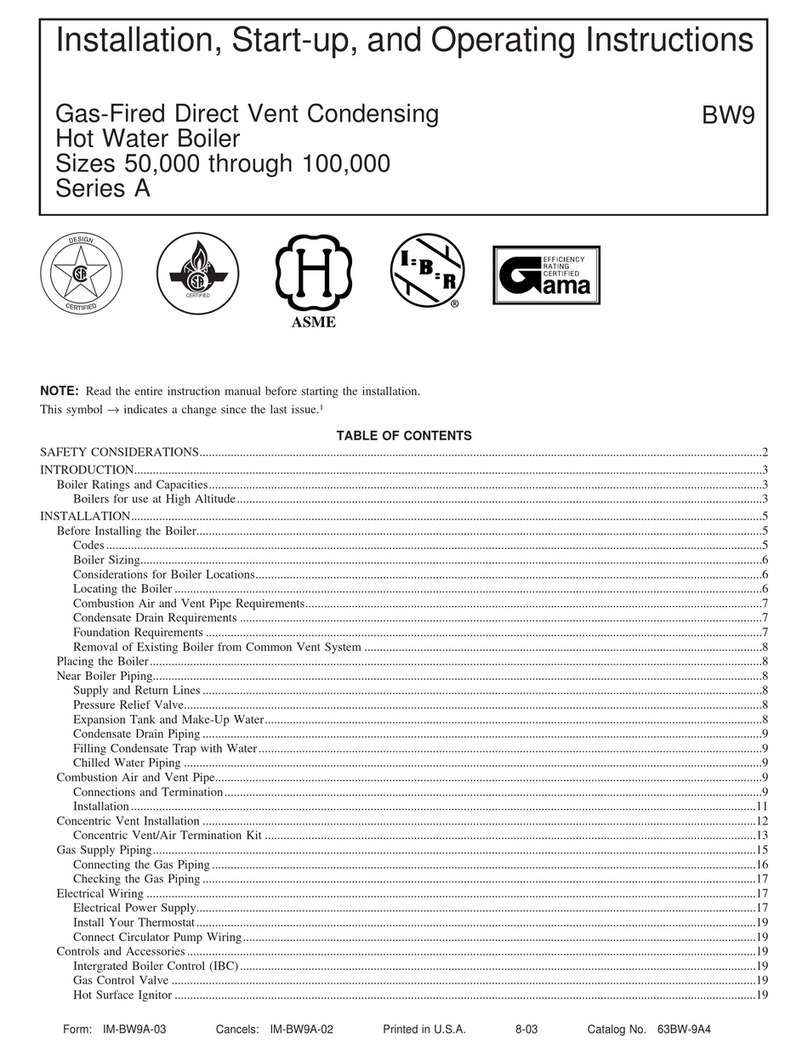
Bryant
Bryant BW9 Instructions and recipes

Bryant
Bryant 235A Manual
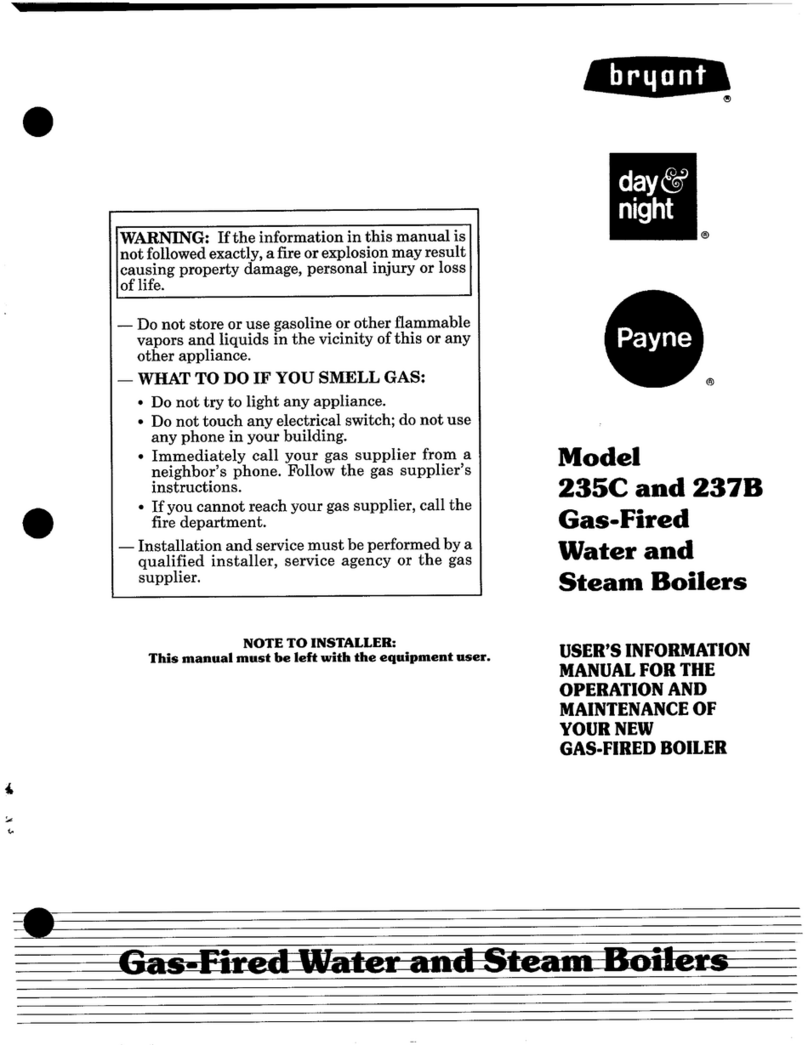
Bryant
Bryant 235C User manual
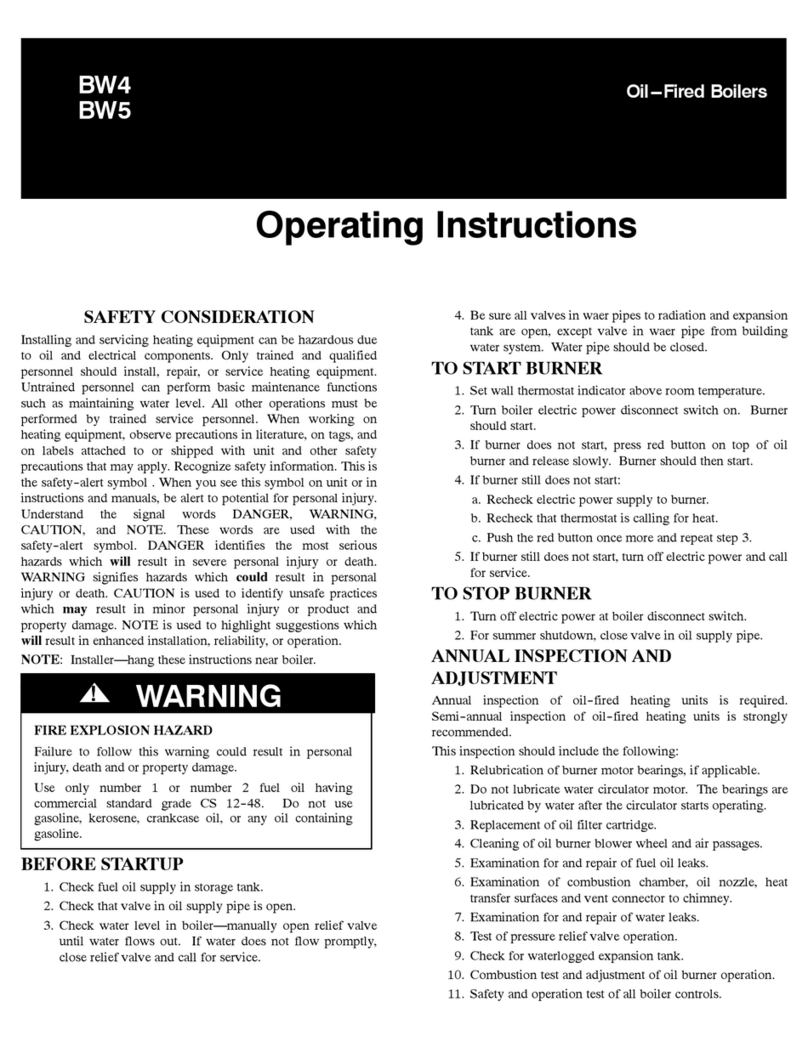
Bryant
Bryant BW4 User manual

Bryant
Bryant 234 Operational manual
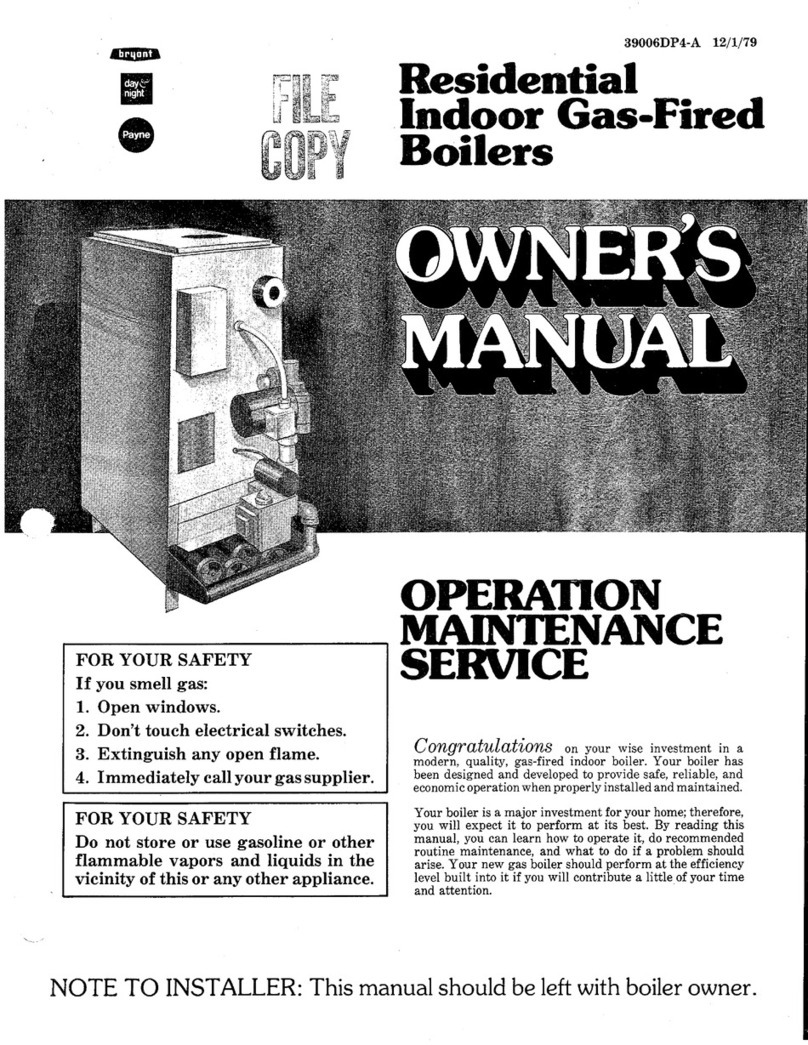
Bryant
Bryant RESIDENTIAL INDOOR GAS FIRED BOILERS... User manual
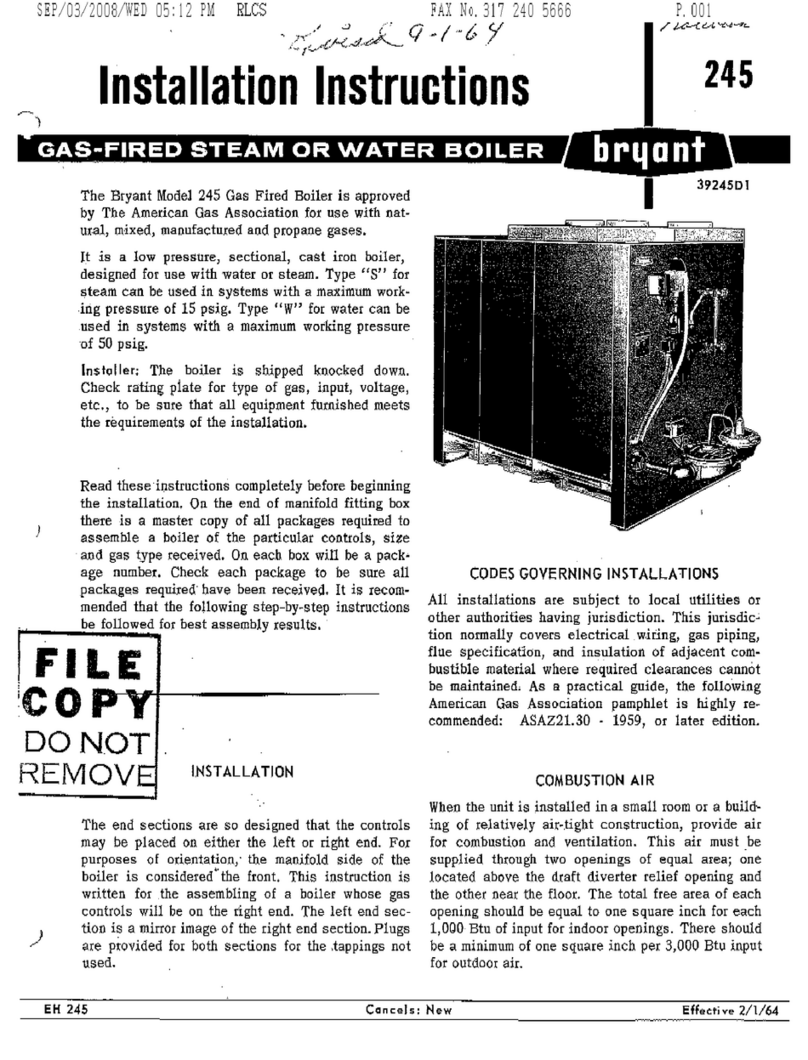
Bryant
Bryant 245 User manual
Popular Boiler manuals by other brands
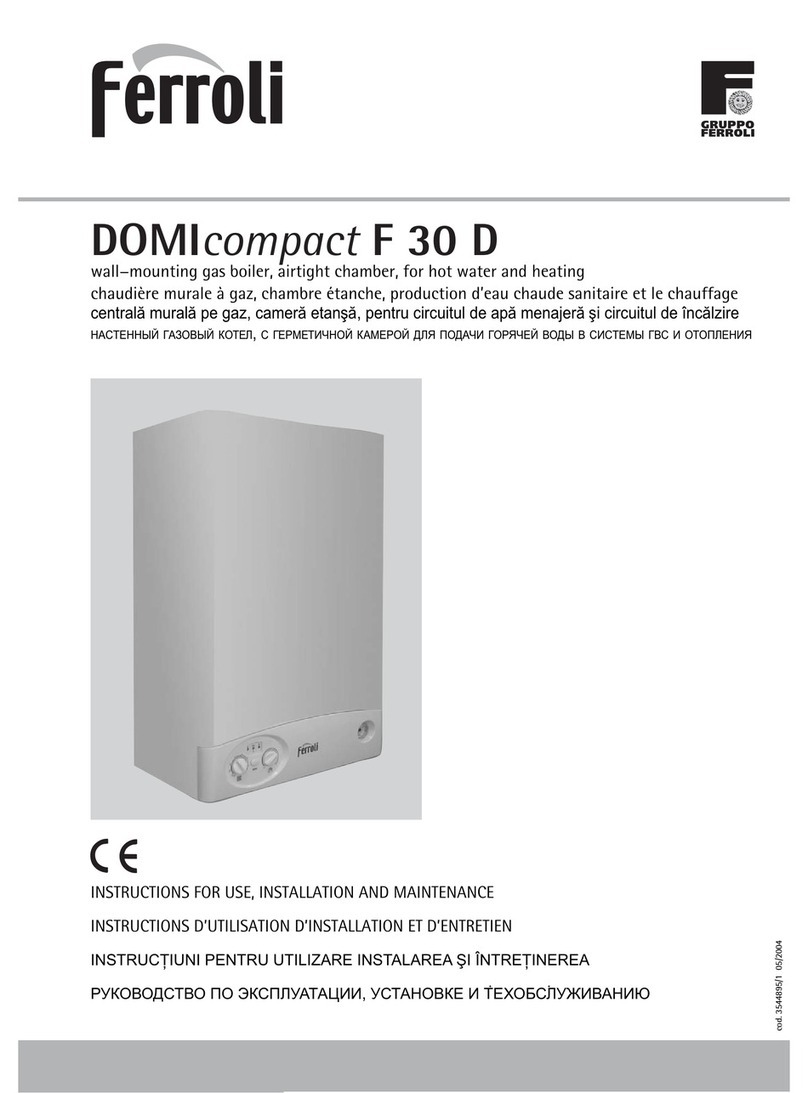
Ferroli
Ferroli DOMIcompact F 30 D null
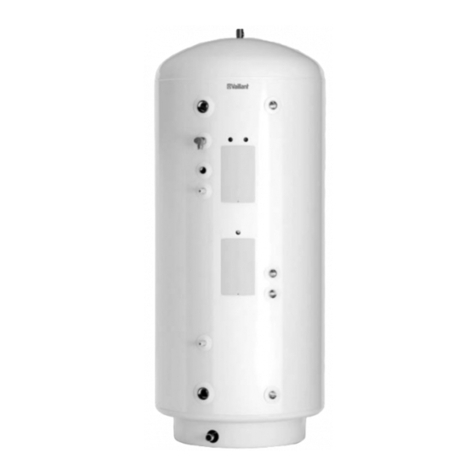
Vaillant
Vaillant uniSTOR VIH SW GB 500 BES operating instructions
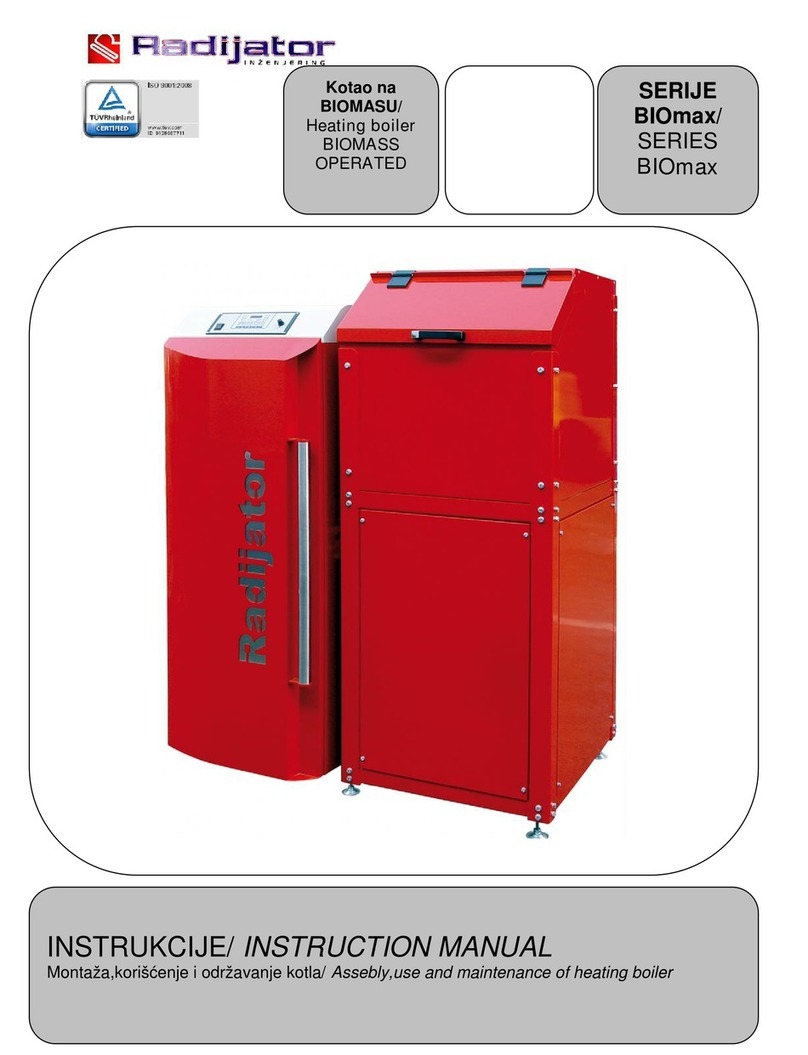
Radijator
Radijator BIO max 23.1 instruction manual
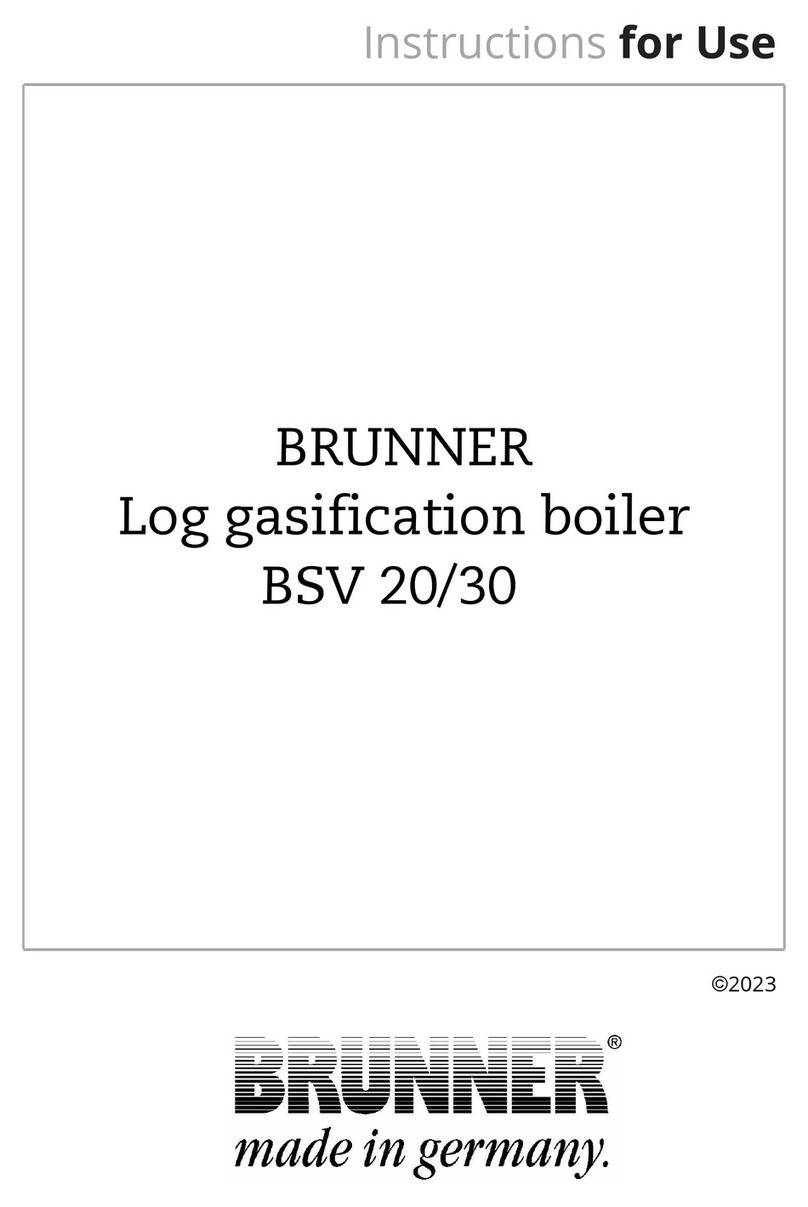
Brunner
Brunner BSV 20 Instructions for use
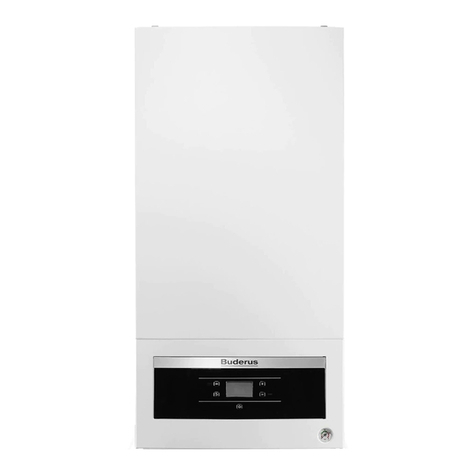
Buderus
Buderus Logamax GB062-24 KDE H V2 Service manual

Potterton
Potterton 50e Installation and Servicing Manual
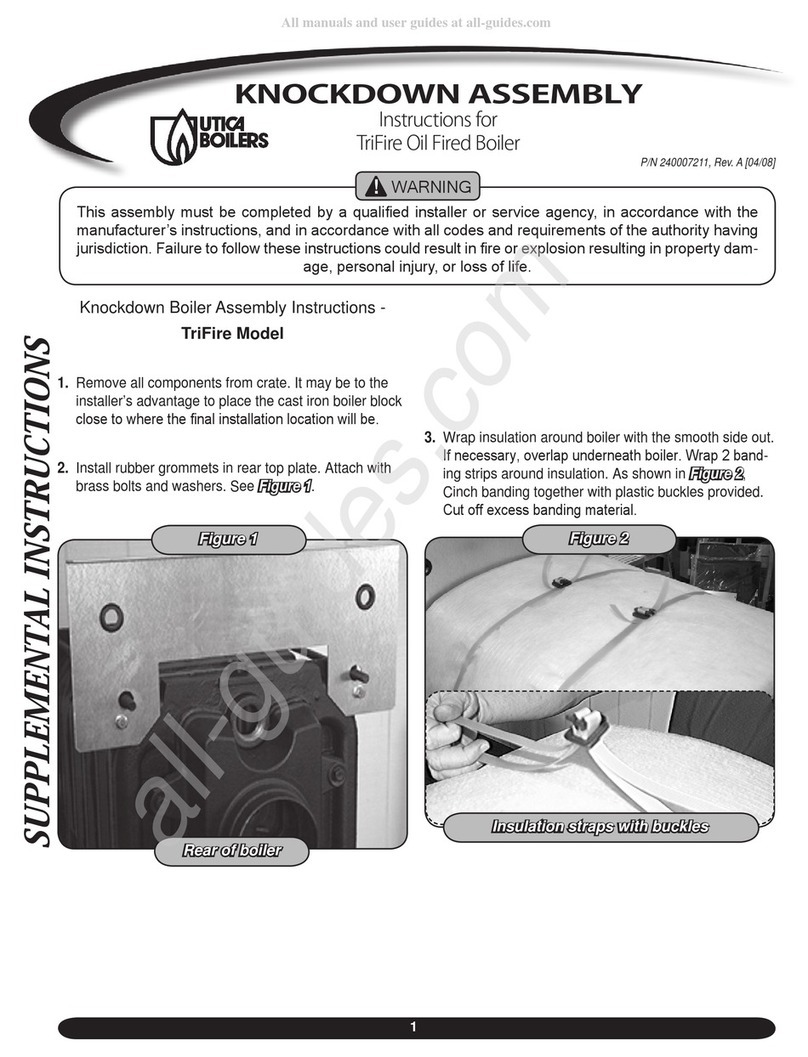
UTICA BOILERS
UTICA BOILERS TriFire Assembly instructions
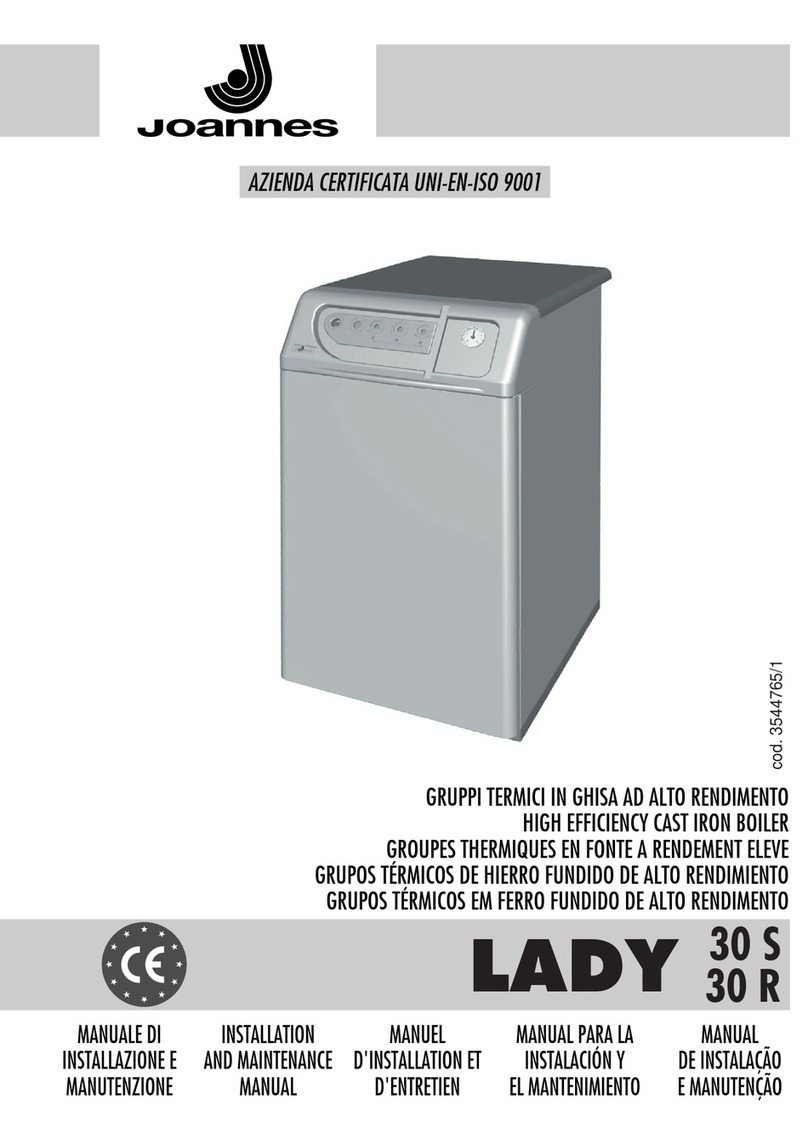
Joannes
Joannes LADY Series Installation and maintenance manual

ECR International
ECR International UB90-125 Installation, operation & maintenance manual
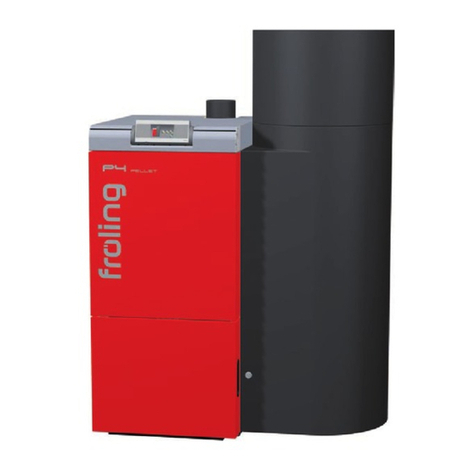
Froling
Froling P4 Pellet 8 - 105 installation instructions
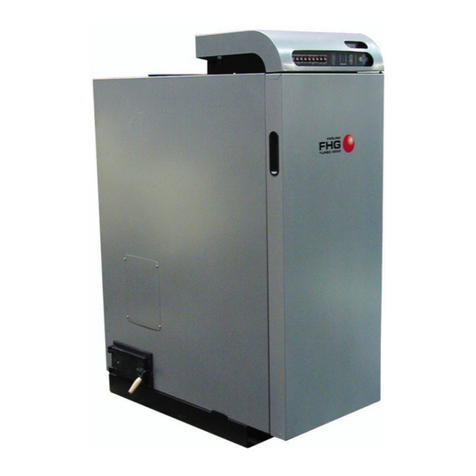
Froling
Froling FHG Turbo 3000 operating instructions

U.S. Boiler Company
U.S. Boiler Company K2 operating instructions
